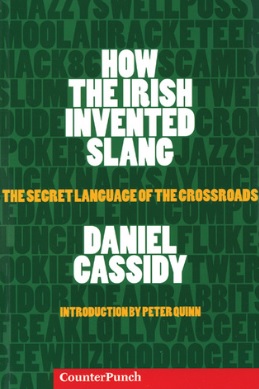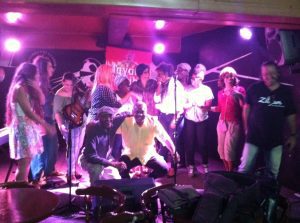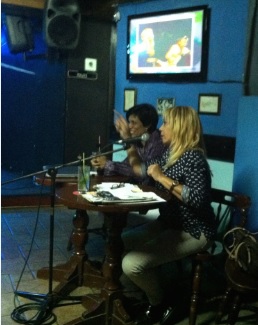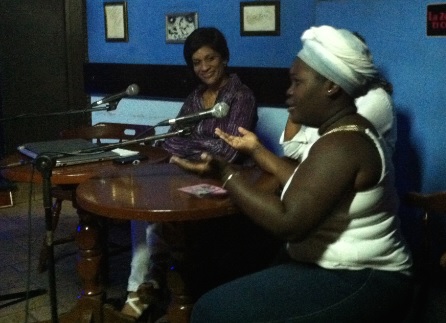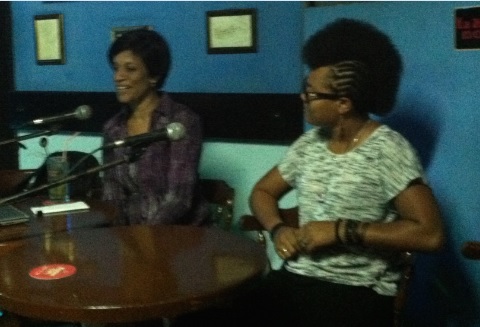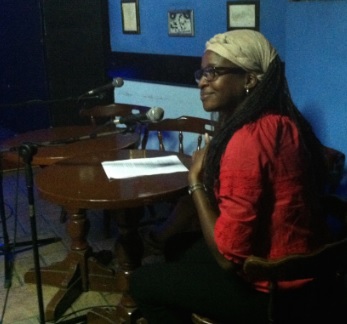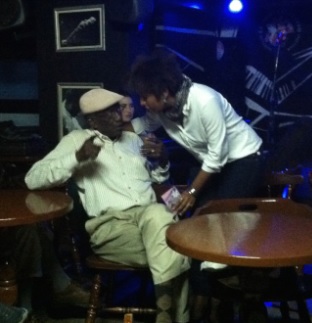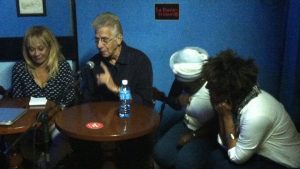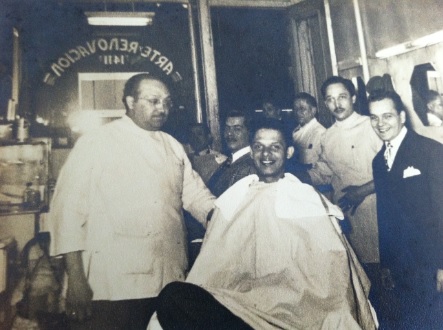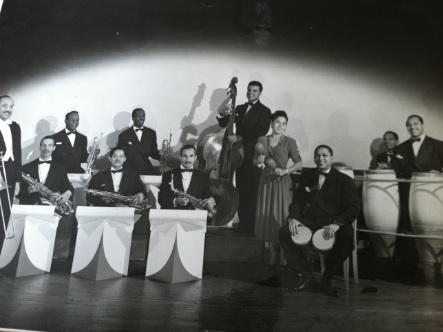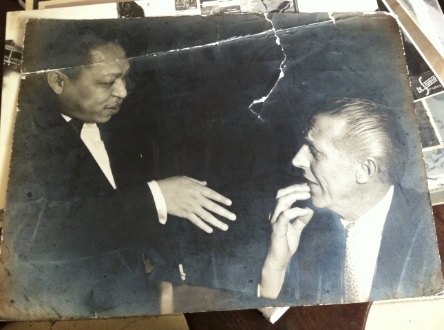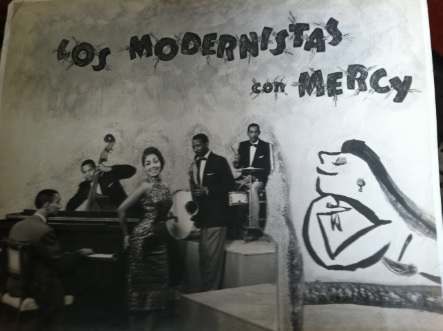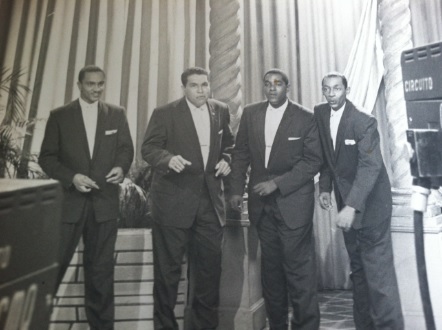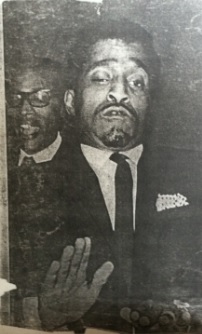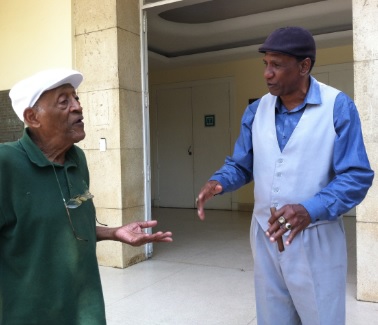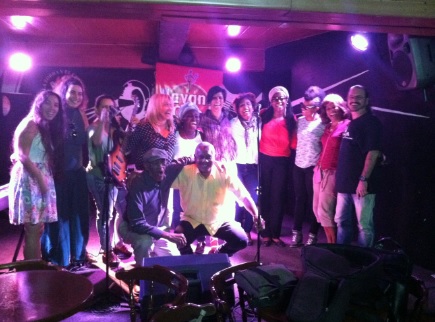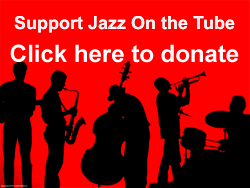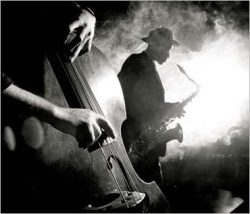Blog, Cuba, Cuban Jazz, Latin Jazz
Scholars are all about paper.
If it’s not on paper, it didn’t happen.
This presents are problem for future scholarship on the subject of Afro-Cuban and Latin jazz.
There’s a similar scholarship problem in the area of contributions of Gaelic to American English for the same reason.
In both cases, the people involved were so busy with the challenges of simply making a living, they didn’t have time to document and archive and mainstream society wasn’t interested in helping.
Bringing the Irish into this may seem like a tangent and in some ways it is, but not really.
Here’s why…
The word “jazz” is Gaelic.
“What?”, you say. “Jazz is an African word that means ‘sex’ or something.”
Here’s the definitive rebuttal of that nonsense
Jesse Sheidlower, editor at large for the Oxford American English Dictionary, wrote in Slate magazine, in December, 2004: “The African etymology of jazz was fabricated by the New York press agent Walter Kingsley in 1917.”
The truth is the first time that “jazz” ever appeared in print was 1913 in an account in the San Francisco Bulletin about a baseball game written by an Irish-American “Scoop” Gleeson.
Readers didn’t recognize the word so three days later on March 6th, 1913, Gleeson provided an explanation:
“Come on, there Professor, string up the big harp and give us all a tune Everybody has come back to the old town full of the old ‘jazz’ and they promise to knock the fans off their feet with their playing.
“What is the ‘jazz?’ Why, it’s a little of that ‘old life,’ the ‘gin-i-ker,’ the ‘pep,’ otherwise known as the enthusiasalum. A grain of ‘jazz’ and you feel like going out and eating your way through Twin Peaks. It’s that spirit which makes ordinary players step around like Lajoies and (Ty) Cobbs
“‘Hap’ Hogan gave his men a couple of shots of ‘near-jazz’ last season and look what happened — the Tigers became the most ferocious set of tossers in the league. Now the Seals have happened upon great quantities of it in the quiet valley of Sonoma and they’re setting the countryside on fire.”
“Pep” was a very popular word in that era, but what about “gin-i-ker?”
“Gin-i-ker” is the phonetic spelling for the Gaelic phrase “Tine Caor” which means “raging heat and lightening.”
“Tine” is the “fire” part of the phrase and it’s pronounced “Jin-eh” or “chin eh”
The Gaelic word “teas” is related to “tine”. It means “heat of the highest temperature.” In human emotional terms that would mean “hot”, “exciting”, “passionate.”
And in Gaelic the word “teas” is pronounced JASS or CHASS.
The adjective “Teasai” in Gaelic is pronounced “JASSY” and means “hot, warm, passionate, exciting, fervent, enthusiastic, feverish, angry.”
After it’s initial coining, the word “jazz” became a local verbal phenomenon in San Francisco.
In fact, an article was published it in the S.F. Bulletin on April 5, 1913 written by Ernest Hopkins: “In Praise of “Jazz” A Futurist Word Which Has Just Joined the Language.”
“Jazz” jumped the Bay and appeared in The Oakland Tribune on October 4th of that same year.
How did it get to New Orleans and the rest of the country?
That’s easy.
Every port city in the US, New Orleans included, was packed with native Gaelic speakers and first generation Irish-Americans. Many worked the docks. Many went to sea.
Many other “mysterious” slang American words come from Gaelic.
Here’s a very short list:
First the American slang, then the Gaelic root, then the Gaelic meaning.
Slum = ‘s slom e = “It’s bleak”
Cop = ceapaim = “I catch”
Racket = reacaireacht = “dealing, selling”
You dig? = Duigeann tú = “Do you understand?”
Scam = ’S cam é” = “trick or deception”
Scramm = “scaraim” = “I get away.”
“Say uncle!” = “anacal” = mercy
Buddy = “bodach” = a healthy, young man
Geezer = “gaosmhar” = wise person
Dude = “dúid” = a foolish-looking fellow based on his clothing choices
Gimmick = “camag” = trick or deceit, or a hook or crooked stick
Longshoreman = loingseoir = a maritime worker
A lot of otherwise untraceable American slang words related to labor, hardship, crime, gambling, violence and other real world, gritty aspects of life appear to have Gaelic origins.
When he died, Alex Haley of “Roots” fame was working on a book that showed the close relations between early Irish immigrants and Afro-Americans.
They lived in the same neighborhoods, worked together, dated, married, and had kids together.
What were Africans called in Liverpool in old days? “Smoked Irishmen.”
Most of the Irish who came to the US in the 19th century were from rural areas. They spoke their own language and lived a life that was much closer to tribal than modern. They were impoverished and discriminated against.
Signs on stores: “No Irish or dogs” and want ads that stated “No Irish need apply” were a reality.
In his research Haley discovered that Billy Holiday and Ella Fitzgerald had some Irish blood as did Muhammad Ali and Jim Hendrix.
History is a lot more complicated and rich than we know.

– Ken McCarthy
Jazz on the Tube
P.S. Our unique programming is made possible by help from people like you. Learn how you can contribute to our efforts here: Support Jazz on the Tube
Thanks.
Go to Cuba with Jazz on the Tube as your guide:
Click here for details
Blog, Cuba, Cuban Jazz, The Cuba-US connection, Video and audio
Two great gentleman percussionists talking about the fine points of the art.
Cándido Camero is the most recorded conga player in jazz history.
In this interview, Bobby Sananbria interviews him about Cándido’s life in Cuba and New York City and the innovations he brought to percussion.
We covered Cándido and the film about him “Hands of Fire” in a previous post.
We also have two in depth interviews with Bobby (1) (2) we recommend.
– Ken McCarthy
Jazz on the Tube
P.S. Our unique programming is made possible by help from people like you. Learn how you can contribute to our efforts here: Support Jazz on the Tube
Thanks.
Go to Cuba with Jazz on the Tube as your guide:
Click here for details
Blog, Cuba, Cuban Jazz, The Cuba-US connection
This year’s headquarters for International Jazz Day is Havana.
With extensive detective work, we managed to find the program.
You can download the English language version here
Lots of interesting stuff, but the thing that jumped out at me more than anything else is this:
On 11 AM on Thursday and Friday (April 27 & 28 respectively) there will be a screening of two different films about jazz “Vivir en Jazz” and something called “The History of Jazz” on Cuba’s educational channel.
The films will be viewed in “11,000 centers of learning throughout the country” and will be followed by discussion.
This is easily the biggest injection of “jazz consciousness” into Cuban public awareness in over 55 years!
On the other side of the Gulf of Mexico, the biggest gathering of Cuban musicians in the US in over 55 years is taking place at this year’s New Orleans Jazz Fest.
Sadly, other than Jazz on the Tube’s noting of these things, none of the jazz press has paid any attention at all to these momentous occasions.
– Ken McCarthy
Jazz on the Tube
P.S. Our unique programming is made possible by help from people like you. Learn how you can contribute to our efforts here: Support Jazz on the Tube
Thanks.
Go to Cuba with Jazz on the Tube as your guide:
Click here for details
Blog, Cuba, Cuban Jazz, Latin Jazz, The Cuba-US connection, Travel to Cuba, Video and audio
By marvelous coincidence, Fiesta del Tambor coincided with Cuban Women in Jazz Week.
El Zorra y La Cuarva, Havana’s pre-eminent jazz club, featured a different woman-led band every night during the week of March 6.
The truth is this scheduling only required a little rearranging of Zorra’s schedule since all of these bands already play there regularly when they’re in the country.
On Wednesday, March 8, International Woman’s Day (a holiday which began in NYC in 1909), the club hosted an all day conference on women in jazz in Cuba.
After a day of fruitful and enlightening discussion, the featured bandleaders got on stage with no rehearsal of any kind, someone called the tune “Besame Mucho” and this resulted.
Apologies to the bass player whose solo got cut off midstream. I ran out of memory and had to jettison files before I could start filming again.
 The whole gang.
The whole gang.
Click on the photo to enlarge it Bellita (Lilia Esther Exposito Pino), bandleader, composer, educator, pianist extraordinaire and organizer of
Bellita (Lilia Esther Exposito Pino), bandleader, composer, educator, pianist extraordinaire and organizer of
women’s week in jazz Singer, composer and bandleader Daimé Arocena
Singer, composer and bandleader Daimé Arocena Drummer and bandleader Yissy Garcia. Her band is BandAncha
Drummer and bandleader Yissy Garcia. Her band is BandAncha A musicologist discusses the rich history of all-woman singing groups in Cuba
A musicologist discusses the rich history of all-woman singing groups in Cuba Singer and band leader Zule Guerra talks with Cuban jazz veteran saxophonist and bandleader Rafael Quiñones
Singer and band leader Zule Guerra talks with Cuban jazz veteran saxophonist and bandleader Rafael Quiñones Legendary jazz singer Bobby Carcassés talks about scat singing with three of Cuba’s top practitioners Bellita, Daimé Arocena, and Zule Guerra
Legendary jazz singer Bobby Carcassés talks about scat singing with three of Cuba’s top practitioners Bellita, Daimé Arocena, and Zule GuerraNow let’s go to the event that brought us to Havana in the first place: Fiesta del Tambor, Festival of the Drum.
– Ken McCarthy
Jazz on the Tube
P.S. Our unique programming is made possible by help from people like you. Learn how you can contribute to our efforts here: Support Jazz on the Tube
Thanks.
Blog, Cuba, Cuban Jazz, Latin Jazz, The Cuba-US connection, Travel to Cuba, Video and audio
We went down to Havana in March to see the Fiesta del Tambor (The Drum Festival.)
We figured a drum festival in Havana had to be amazing, but nothing prepared us for the superabundance of talent and the sheer amount of music offered.
Since Jazz on the Tube is a jazz web site, we’re going to start with the jazz we encountered, but follow the thread to the end to get a more complete picture of this Treasure Island of music, both in and outside the festival.
At the Riviera Hotel, Havana
March 2017
Oliver Valdes – leader, drummer
Alejandro Delgado – trumpet
Tony Rodriquez – piano
Jorge Reyes – bass
Marcus Santos – congas
Did you recognize the tune?
It’s “Chan Chan” a 1987 composition by Compay Segundo featured in the movie “The Buena Vista Social Club.”
This is a great example of the alchemy jazz can accomplish, taking a well known melody and finding deeper magic in it. (Think John Coltrane’s version of “My Favorite Things.”)
At the Riviera Hotel
March 2017
Delvis Ponce Jove – leader, alto saxophone
Carlos Vietia – saxophone, trumpet
Michael Herrera – saxophone
Miguel Garcia – piano
Victor Cambel – piano
Edwardo Silveira – congas
Karel Kindelan – drums

Delvis Ponce Jove talks with a mystery man. Click here to discover who he is
– Ken McCarthy
Jazz on the Tube
P.S. Our unique programming is made possible by help from people like you. Learn how you can contribute to our efforts here: Support Jazz on the Tube
Thanks.
Artist-Educators, Blog, Cuba, Cuban Jazz, Latin Jazz, The Cuba-US connection, Travel to Cuba
Gilberto Valdés is eight-eight years old this year. We had the wonderful opportunity to meet him and spend some time talking jazz.
Jazz drummer, singer, band leader, producer and educator. Gilberto’s life tells the story of post-war jazz in the United States and Cuba and bridges Cuba’s pre and post-Revolution jazz history.
Havana-born, as a five year old he was introduced to American jazz by his young uncle, Raul Zequeira, who was just nine years older than him. During his childhood Gilberto accompanied his uncle to many parties and social gatherings where American jazz and pop music was au courant.
Later as a young man, Gilberto made frequent trips to New York City where he stayed with his step-father, Humberto Gelabert, a former sideman with Benny Carter and the bandleader of his own Cuban orchestra. Humberto also owned a popular barbershop in East Harlem.
During these trips, Gilberto went to the Savoy Ballroom, Minton’s (where he sat in one night), Birdland, and the Palladium Ballroom.
What he learned, he brought back home and among other things helped pioneer bebop on the island.
In 1957, while his vocal quartet “The Cavaliers” was performing at San Souci, the preeminent nightclub in Havana, he met Roy Haynes who at the time was the drummer in Sarah Vaugh’s Trio. Haynes gave Gilberto a set of drum sticks as an encouragement to take up the drums, which he did.
He spent the first half of the sixties in Europe where he reconnected with his Uncle Raul who had moved to Paris after World War II and had his own band.
When Gilberto returned to Cuba he became the country’s jazz ambassador hosting Dizzy Gillespie’s historic 1977 visit, bringing the Cuban super group Irakere to the U.S. and representing Cuban jazz musicians internationally.
As the last picture in this series shows, he’s a beloved figure in Havana’s jazz scene where he’s been an educator and mentor to countless young jazz musicians.
Along with pianist and bandleader Bellita, he played a key role in saving Cuba’s most important jazz club El Zorra y La Cuarva from being turned into a pizzeria!
Photos
 Gilberto’s step-father Humberto Gelabert (on the left) was
Gilberto’s step-father Humberto Gelabert (on the left) was
proprietor of a barbershop in East Harlem Gilberto’s step-father and his Cuban jazz orchestra
Gilberto’s step-father and his Cuban jazz orchestra
He’s on the far left with a trombone Gilberto’s step-father talking with Stan Kenton
Gilberto’s step-father talking with Stan Kenton Gilberto’s band brought modern North American jazz to Cuba.
Gilberto’s band brought modern North American jazz to Cuba.
That’s Gilberto on drums on the upper right Gilberto started as a professional singer in high school specializing in Harmonical Vocal Quartet music and continued with singing groups his entire career. Gilberto is on the far right.
Gilberto started as a professional singer in high school specializing in Harmonical Vocal Quartet music and continued with singing groups his entire career. Gilberto is on the far right. Gilberto on drum kit
Gilberto on drum kit A television pioneer in Cuba. Gilberto on the far right
A television pioneer in Cuba. Gilberto on the far right A publicity shot from the White Elephant in Paris in the 1960s.
A publicity shot from the White Elephant in Paris in the 1960s.
Gilberto on timbales Gilberto on drums with Bebe Valdés in Sweden in the 1960s
Gilberto on drums with Bebe Valdés in Sweden in the 1960s Sammy Davis Jr. on congas and Gilberto on timbales
Sammy Davis Jr. on congas and Gilberto on timbales Gilberto (with tie) brought Irakere to New York City and the world.
Gilberto (with tie) brought Irakere to New York City and the world.
Chucho Valdés on the left. The President of CBS’s Record Division Bruce Lundwald on the upper right. Conga player Oscar Valdés (no relation) on the lower right In front of Casa de la Cultura de Plaza, the birthplace of the Havana Jazz Festival, Gilberto with youngest son of Jorge Varona, who played with Irakere during Irakere’s visit to US
In front of Casa de la Cultura de Plaza, the birthplace of the Havana Jazz Festival, Gilberto with youngest son of Jorge Varona, who played with Irakere during Irakere’s visit to US Gilberto with special friends – March 2017.
Gilberto with special friends – March 2017.
Up front, to the left of the man in yellow, Waldo Nelson Cárdenas
of the Havana jazz club El Zorra y La CuervaTo find out who these special friends are, click here.
– Ken McCarthy
Jazz on the Tube
P.S. Our unique programming is made possible by help from people like you. Learn how you can contribute to our efforts here: Support Jazz on the Tube
Thanks.
